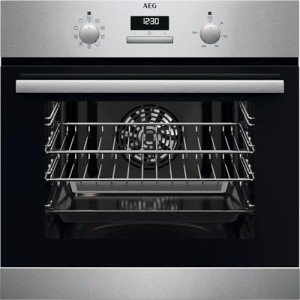
In recent years, the modern kitchen has experienced a renaissance, with homeowners positioning a meticulous concentrate on cooking devices that boost both performance and visual appeal. Amongst the necessary kitchen devices is the single oven, a staple for numerous British homes. This article explores the different elements of single ovens in the UK, including their types, functions, advantages, and factors to consider for potential buyers.
A single oven is a standalone or built-in cooking device created to bake, roast, grill, and often steam food, using a large range of culinary possibilities. As the name suggests, single ovens include one main compartment, distinguishing them from double ovens, which provide two different cooking locations.
Single ovens can be found in different configurations and technologies. Below is a list of typical types found in UK cooking areas:
Electric Single Ovens
Gas Single Ovens
Compact or Built-In Single Ovens
Convection Single Ovens
When picking a single oven, there are numerous functions that customers ought to keep an eye out for. This can significantly impact the usability and performance of the device in everyday cooking. Noteworthy features include:
Single ovens provide numerous advantages, making them popular choices for kitchen areas of all sizes. Here are some crucial benefits:
Space Efficiency: The compact size of a single oven conserves kitchen space, which is particularly beneficial for homes and smaller homes.
Cost-Effectiveness: Typically, single ovens are more budget friendly than double ovens in terms of preliminary purchase price and energy intake.
Simplicity of Use: With just one cooking compartment, single ovens are straightforward to operate, making them ideal for newbie cooks.
Versatility: A single oven can manage a wide range of cooking jobs-- from baking bread to roasting meats-- making it flexible enough for day-to-day culinary experiments.
When thinking about acquiring a single oven, there are essential installation aspects to reflect upon:
Size and Dimensions: Always check the area where the oven will be installed to make sure that it fits conveniently. The standard size for built-in designs is usually around 60cm broad.
Power Supply: Determine whether you require an electric or gas oven based on existing kitchen components. An electrical expert may be required for electric designs.
Ventilation: Ensure appropriate ventilation, specifically with gas ovens, to prevent the buildup of damaging gases.
The marketplace for single ovens is filled with a variety of brand names, each offering special features and reliability. The following table notes some of the most suggested brand names in addition to their standout features.
| Brand | Secret Features | Price Range |
|---|---|---|
| Bosch | Reliable, effective, contemporary styles | ₤ 400 - ₤ 800 |
| Neff | Slide & & Hide door, intuitive controls | ₤ 600 - ₤ 1,200 |
| Beko | Budget-friendly alternatives with great efficiency | ₤ 250 - ₤ 600 |
| John Lewis | Premium, stylish styles | ₤ 500 - ₤ 1,000 |
| AEG | Advanced innovation and energy efficiency | ₤ 600 - ₤ 1,500 |
Yes, you can replace a double oven with a single oven, however make sure to validate the available space and power supply compatibility.
The running expenses of a single oven depend upon its energy efficiency ranking and how frequently it is utilized. Usually, an A-rated oven will be cheaper to run than lower-rated equivalents.
Definitely! Single ovens, specifically convection designs, are well-suited for baking due to their equally dispersed heat.
With correct maintenance, a single oven can last anywhere from 10 to 20 years. Routine cleansing and maintenance can extend its life-span.

Most makers provide a warranty ranging from one to five years, depending on the brand and design. It is suggested to examine service warranty options before acquiring.
Single ovens play a crucial role in the modern Ovens UK kitchen, combining efficiency, adaptability, and space-saving benefits. With a range of types and features available, consumers can easily find a single oven that satisfies their cooking needs and choices. By considering the important elements highlighted in this short article, house owners can make educated decisions, guaranteeing that their kitchen remains a hub for culinary imagination for years to come.
No Data Found!

